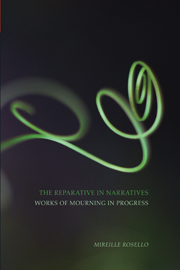Book contents
- Frontmatter
- Contents
- Acknowledgements
- Introduction: From the Debate on ‘Repentance’ to the Reparative in Memorial Narratives
- 1 Algerian Humour: ‘Jay Translating’ Words and Silences
- 2 René-Nicolas Ehni: Matricide and Deicide as Figures of Unforgivable Violence and Redemption during the Algerian War of Independence
- 3 The Truth of False Testimonies: False Brothers in Michael Haneke's Caché
- 4 Gisèle Halimi's Autobiographical and Legal Narratives: Doing to Trees what They Did to Me
- Conclusion: Repentance and Detective Fiction: Legal Powerlessness and the Power of Narratives
- Notes
- Bibliography
- Index
Introduction: From the Debate on ‘Repentance’ to the Reparative in Memorial Narratives
- Frontmatter
- Contents
- Acknowledgements
- Introduction: From the Debate on ‘Repentance’ to the Reparative in Memorial Narratives
- 1 Algerian Humour: ‘Jay Translating’ Words and Silences
- 2 René-Nicolas Ehni: Matricide and Deicide as Figures of Unforgivable Violence and Redemption during the Algerian War of Independence
- 3 The Truth of False Testimonies: False Brothers in Michael Haneke's Caché
- 4 Gisèle Halimi's Autobiographical and Legal Narratives: Doing to Trees what They Did to Me
- Conclusion: Repentance and Detective Fiction: Legal Powerlessness and the Power of Narratives
- Notes
- Bibliography
- Index
Summary
‘Narratives’ and ‘reparative’: these two words will be used throughout this book, and the nature of their relationship will remain unstable. Originally, I was looking for a working definition of what a ‘reparative narrative’ would be, might be. And positing that reparative narratives could be found was of the order of a theoretical hypothesis. I was not sure that they existed but it was clear that if they did, I needed them, and needed them badly. I wanted to learn at the same time how to identify them and to understand how they worked in order to recognize them and remember them, to let them nurture me and impart to me their wisdom, so as to be able eventually to share them and teach them.
The original search for pre-existing ‘reparative narratives’, however, was rather frustrating because they were a premature theoretical dream. This study, then, is not about reparative narratives but about the reparative in narratives. The objective is to analyse the relationship between the reparative and narratives, and to examine the conditions that enable these two words to coexist in productive tension. Depending on how you read the stories that constitute the building blocks of the chapters, each word, ‘reparative’ and ‘narrative’ will, at a given moment, qualify the other.
- Type
- Chapter
- Information
- The Reparative in NarrativesWorks of Mourning in Progress, pp. 1 - 28Publisher: Liverpool University PressPrint publication year: 2010



